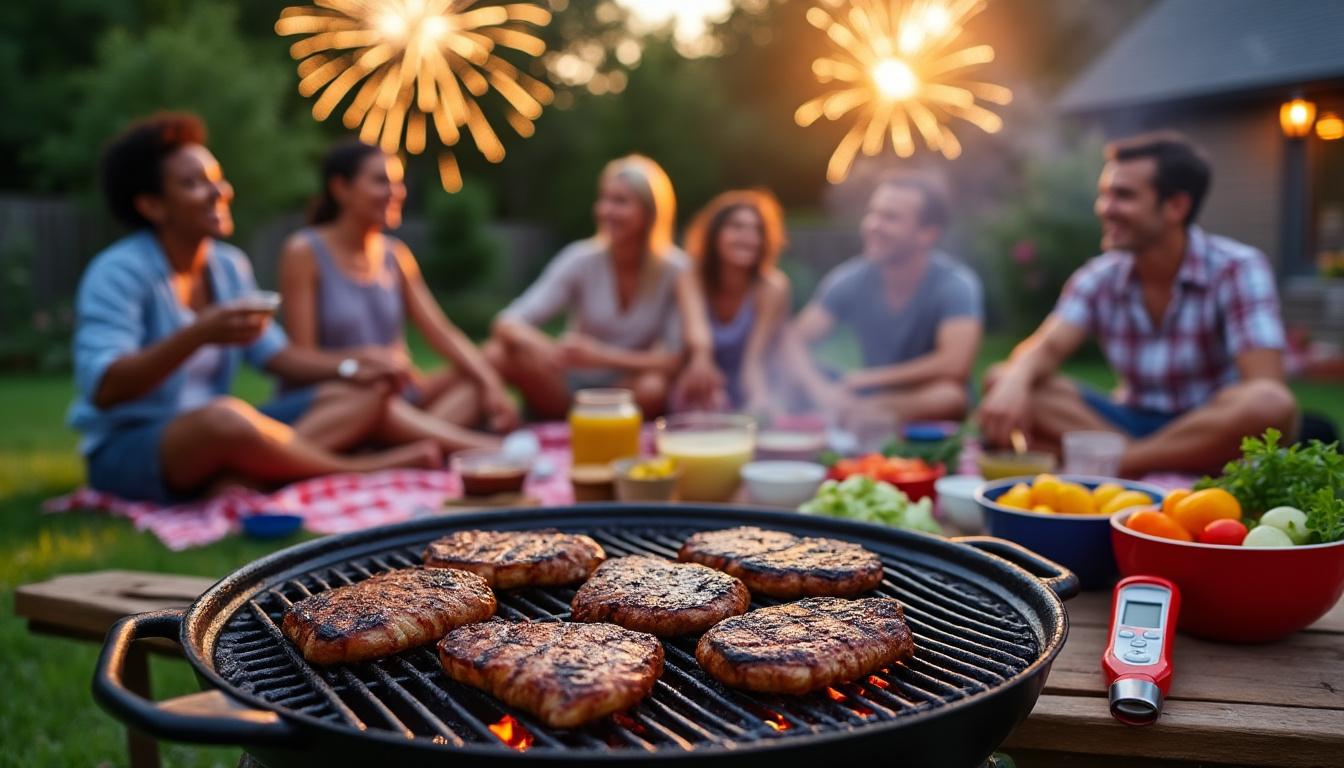As Americans prepare to celebrate Independence Day with traditional barbecues, a renewed focus on grilling safety is paramount to ensuring enjoyable and risk-free meals. With the heat of summer upon us, mastering safe grilling techniques for chicken and steak involves more than just flavor; it demands strict adherence to USDA food safety standards. From selecting the right grilling equipment such as Weber, Traeger, and Napoleon, to employing precise cooking temperatures, every step is crucial in preventing foodborne illnesses while enhancing the barbecue experience.
Essential USDA Food Safety Guidelines for Grilling Chicken and Steak
July 4th gatherings often feature chicken and steak as centerpiece dishes, yet improper preparation and cooking can lead to health risks. The USDA outlines essential safety tips that professional entrepreneurs and grilling enthusiasts alike follow to keep foodborne pathogens at bay.
- Cook Thoroughly the First Time: Never partially cook meats with the intention of finishing them later; this practice can promote bacterial growth.
- Use Food Thermometers: Visual cues like color are unreliable. Employ accurate thermometers to ensure chicken reaches a safe internal temperature of 165°F (74°C) and steak attains at least 145°F (63°C).
- Safe Thawing Methods: Thaw frozen meats in the refrigerator, using cold water, or a microwave, but always cook immediately after thawing via the latter two methods.
- Proper Marination: Always marinate chicken and steak in the refrigerator using food-grade containers and never reuse marinade without boiling it first to eliminate bacteria.
Achieving Perfectly Safe Grilled Chicken This Fourth of July
Grilling chicken demands precise attention due to its susceptibility to Salmonella and other bacteria. The USDA firmly recommends that all poultry, including turkey and chicken, be cooked to a minimum internal temperature of 165°F (74°C). This temperature ensures complete eradication of harmful pathogens without compromising juiciness.
- Ensure even thickness when grilling chicken breasts to promote uniform cooking.
- Utilize instant-read thermometers from brands respected by professionals to gauge doneness quickly and accurately.
- Pair grilling technology options, such as the innovative heat distribution found in Napoleon or Char-Broil grills, with seasoned grilling techniques for optimal results.
| Grilling Chicken Tips | Reason |
|---|---|
| Do not partially pre-cook chicken | Avoid bacterial growth risks |
| Cook to 165°F internal temperature | Ensures food safety |
| Marinate only in refrigerator | Prevents bacteria multiplication |
| Use thermometer on thickest part | Accurately judge doneness |
| Clean grill between uses | Prevents cross-contamination |
Safe and Flavorful Steak Grilling Practices for Independence Day
While steak enthusiasts value the distinct sear and mouthwatering juices of their grilled cuts, food safety should never be sacrificed for taste. The USDA established 145°F (63°C) as the minimum internal temperature for beef steaks, roasts, lamb, and veal to curb foodborne risks.
- Allow steaks to rest post-cooking for at least three minutes to maintain heat distribution and safety.
- Select grilling brands known for temperature control precision such as Lodge, CampChef, or Ooni for consistent results.
- Invest in a high-quality digital thermometer to ensure the steak meets the advisable minimum internal temperature.
| Steak Grilling Parameters | Details |
|---|---|
| Cooking Temperature | Minimum 145°F internal |
| Rest Time | At least 3 minutes after removal |
| Grill Types Recommended | Napoleon, Lodge, Char-Broil |
| Use of Thermometer | Essential for safety and doneness checking |
Additional July 4th Food Safety and Grilling Tips
For entrepreneurs and grilling professionals aiming to excel during the Independence Day craze, integrating extra safety measures is key to avoiding foodborne illness outbreaks that can tarnish reputations.
- Maintain the Danger Zone Awareness: Foods should be kept out of the bacterial growth “Danger Zone” between 40°F and 140°F. Hot foods must be maintained above 140°F, and cold foods below 40°F using coolers or ice baths.
- Limit Food Exposure Time: Perishables should not remain on picnic tables beyond two hours, or one hour if temperatures exceed 90°F.
- Clean Grill and Tools: Prioritize sanitizing grills and utensils before cooking to prevent cross-contamination.
- Choose Quality Charcoal and Wood: Brands like Kingsford and Emeril Lagasse’s favored blends enhance flavor and heat control.
- Explore Modern Equipment: Traeger wood pellet grills offer precision temperature regulation, while Cuisinart gas grills provide efficient ignition and portability.
| July 4th Food Safety Checklist | Best Practices |
|---|---|
| Temperature Control | Keep hot foods ≥ 140°F; cold foods ≤ 40°F |
| Time Restrictions | Remove perishables after 2 hours (1 hour if >90°F) |
| Cleaning | Sanitize grills, utensils, and surfaces beforehand |
| Marinating | Refrigerate and avoid room-temperature marinating |
| Use of Thermometers | Mandatory to ensure safe internal temperatures |
FAQ on Safe Grilling Techniques for Chicken and Steak
- Q: Can I partially cook chicken ahead of my barbecue?
A: It is strongly advised not to partially cook chicken ahead of time as this increases the risk of bacterial growth and foodborne illness. - Q: How can I tell if my steak is safely cooked?
A: Use a food thermometer to confirm the internal temperature reaches at least 145°F and let the steak rest for three minutes before serving. - Q: What is the safest way to thaw frozen meats?
A: Thaw meats in the refrigerator, in cold water, or in a microwave. Cook immediately if thawed in cold water or microwave. - Q: Is it safe to reuse marinade?
A: Only if the marinade has been boiled after contact with raw meat. Otherwise, reuse is unsafe due to potential bacterial contamination. - Q: Which grills are recommended for precise temperature control?
A: Grills from Weber, Traeger, Napoleon, and Cuisinart are renowned for consistent and controllable heat settings.
For more comprehensive food safety and grilling advice, refer to trusted culinary and food safety resources such as top chef cooking tips that provide expert insights on combining flavor with safety effectively. Ensuring safe practices elevates the July 4th barbecue experience, protecting guests and celebrating independence with confidence.

